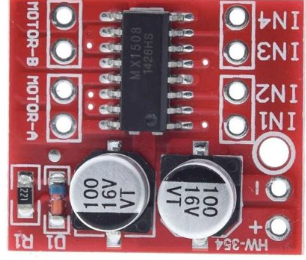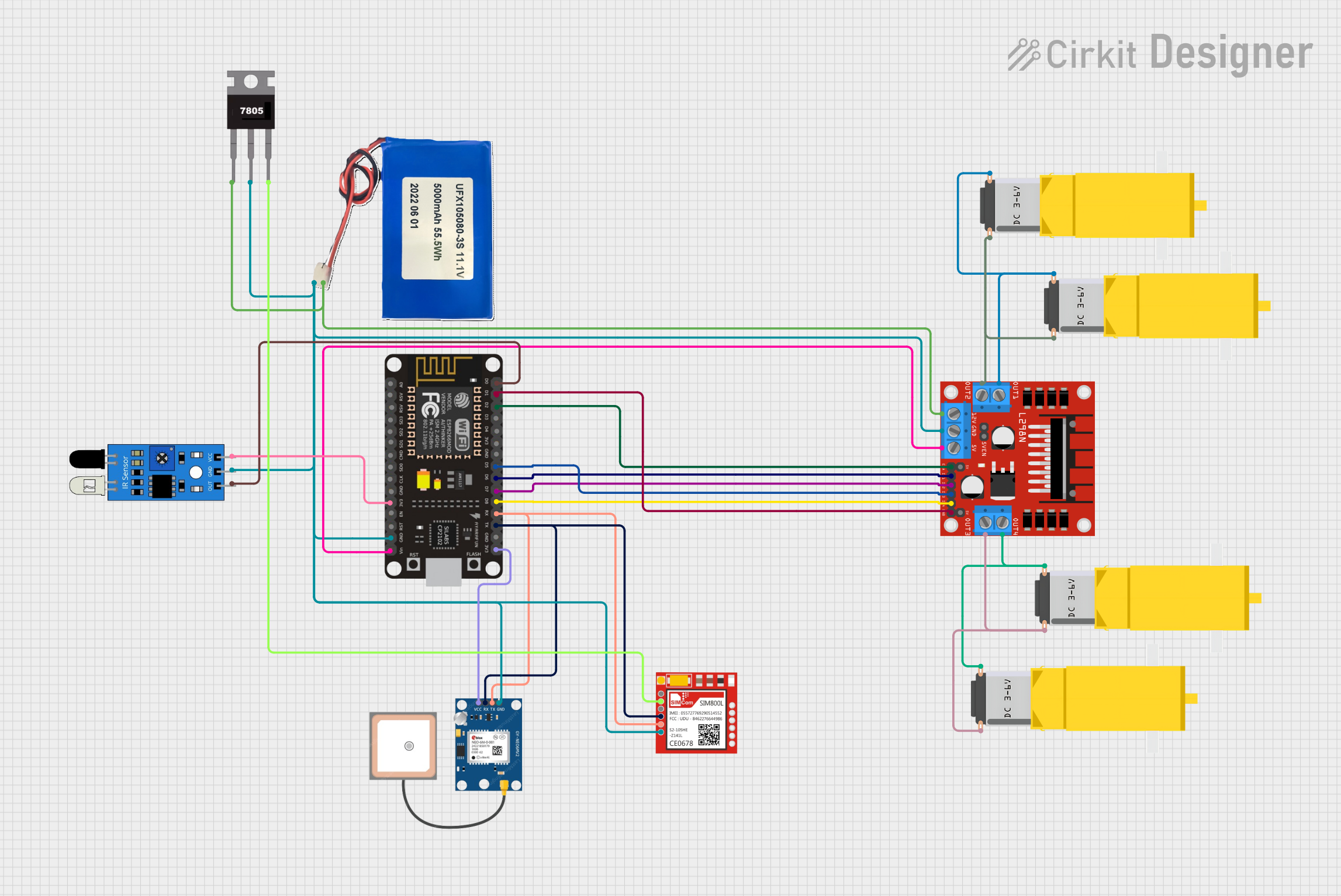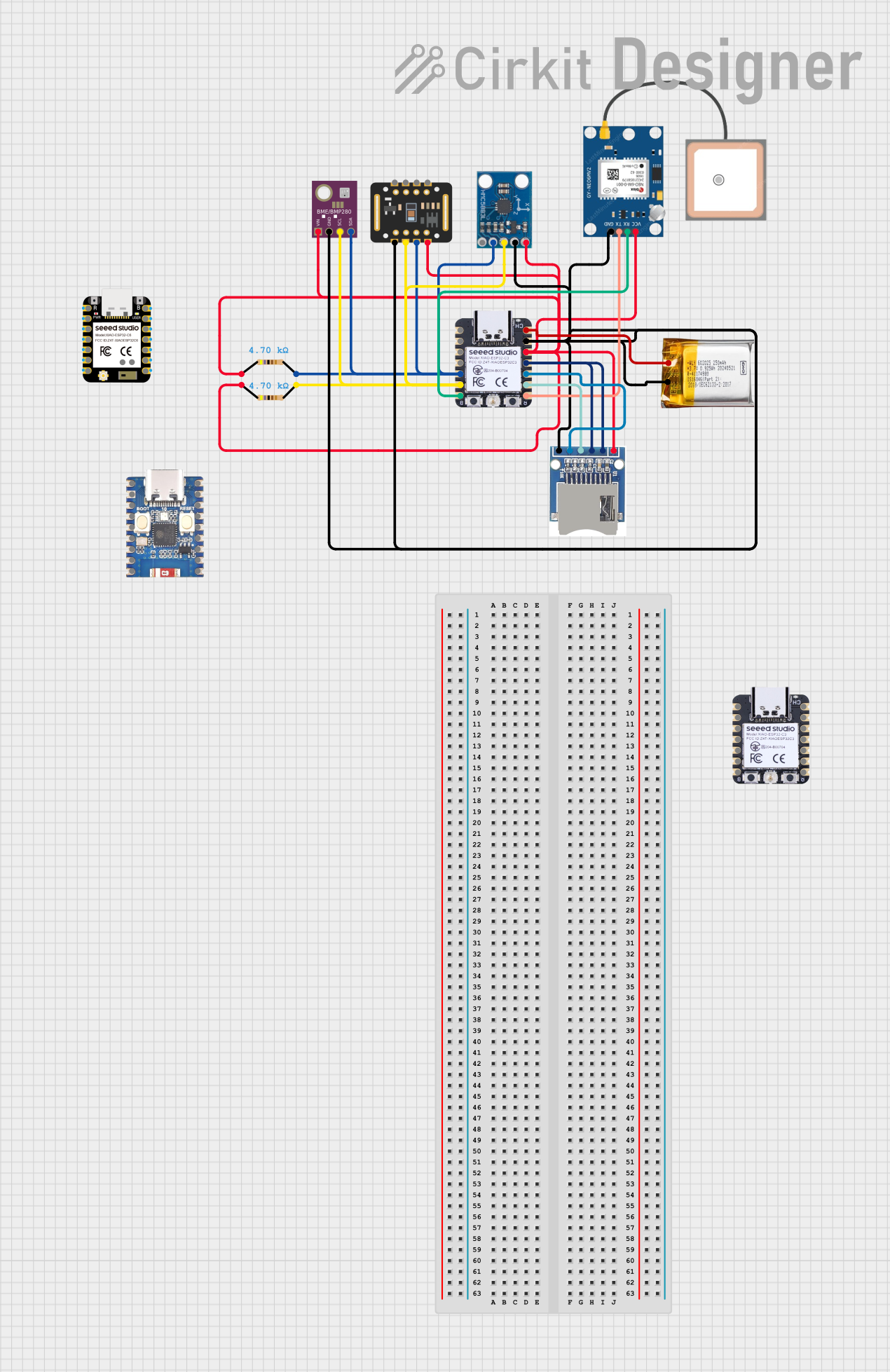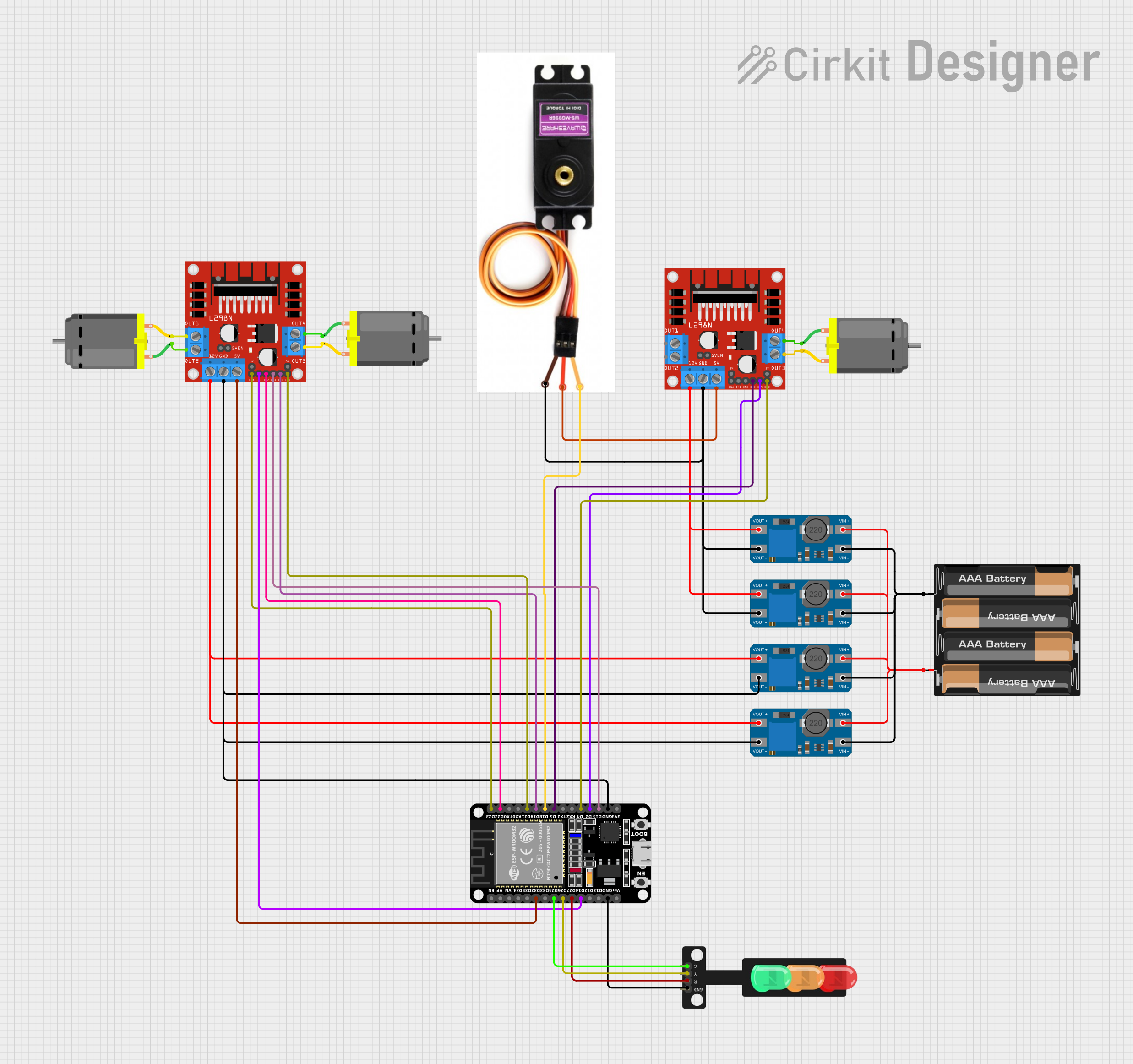
How to Use MX1508: Examples, Pinouts, and Specs

 Design with MX1508 in Cirkit Designer
Design with MX1508 in Cirkit DesignerIntroduction
The MX1508 is a dual operational amplifier (op-amp) designed for low-power applications. It offers high gain, low noise, and a wide bandwidth, making it an excellent choice for signal conditioning, filtering, and amplification tasks in various electronic circuits. Its compact design and reliable performance make it suitable for use in audio processing, sensor signal amplification, and analog computing applications.
Explore Projects Built with MX1508

 Open Project in Cirkit Designer
Open Project in Cirkit Designer
 Open Project in Cirkit Designer
Open Project in Cirkit Designer
 Open Project in Cirkit Designer
Open Project in Cirkit Designer
 Open Project in Cirkit Designer
Open Project in Cirkit DesignerExplore Projects Built with MX1508

 Open Project in Cirkit Designer
Open Project in Cirkit Designer
 Open Project in Cirkit Designer
Open Project in Cirkit Designer
 Open Project in Cirkit Designer
Open Project in Cirkit Designer
 Open Project in Cirkit Designer
Open Project in Cirkit DesignerCommon Applications and Use Cases
- Signal conditioning for sensors
- Audio signal amplification
- Active filters (low-pass, high-pass, band-pass)
- Analog computation circuits
- Voltage followers and buffer circuits
Technical Specifications
The MX1508 is designed to meet the needs of low-power and high-performance applications. Below are its key technical specifications:
| Parameter | Value |
|---|---|
| Supply Voltage (Vcc) | 3V to 15V (single supply) |
| Input Offset Voltage | ≤ 5 mV |
| Input Bias Current | ≤ 250 nA |
| Gain Bandwidth Product | 1 MHz |
| Slew Rate | 0.5 V/µs |
| Output Voltage Swing | 0V to (Vcc - 1.5V) |
| Operating Temperature | -40°C to +85°C |
| Package Type | DIP-8, SOIC-8 |
Pin Configuration and Descriptions
The MX1508 is typically available in an 8-pin package. Below is the pinout and description:
| Pin Number | Pin Name | Description |
|---|---|---|
| 1 | OUT1 | Output of Op-Amp 1 |
| 2 | IN1- | Inverting input of Op-Amp 1 |
| 3 | IN1+ | Non-inverting input of Op-Amp 1 |
| 4 | VSS | Negative power supply (or ground for single supply) |
| 5 | IN2+ | Non-inverting input of Op-Amp 2 |
| 6 | IN2- | Inverting input of Op-Amp 2 |
| 7 | OUT2 | Output of Op-Amp 2 |
| 8 | VDD | Positive power supply |
Usage Instructions
The MX1508 is straightforward to use in a variety of circuit configurations. Below are the steps and considerations for using the component effectively:
How to Use the MX1508 in a Circuit
- Power Supply: Connect the VDD pin to the positive supply voltage (3V to 15V) and the VSS pin to the negative supply voltage or ground (for single-supply operation).
- Input Connections:
- For inverting configurations, connect the input signal to the IN- pin through a resistor.
- For non-inverting configurations, connect the input signal directly to the IN+ pin.
- Output Connections: Connect the OUT pin to the desired load or the next stage of the circuit.
- Feedback Network: Use resistors and/or capacitors between the output and input pins to set the gain and frequency response of the amplifier.
Important Considerations and Best Practices
- Power Supply Decoupling: Place a 0.1 µF ceramic capacitor close to the VDD and VSS pins to reduce noise and improve stability.
- Input Impedance: Ensure the input impedance of the circuit matches the requirements of the MX1508 to avoid signal distortion.
- Output Loading: Avoid connecting loads that exceed the output current capability of the op-amp.
- Thermal Management: Operate the MX1508 within its specified temperature range to ensure reliable performance.
Example: Connecting the MX1508 to an Arduino UNO
The MX1508 can be used with an Arduino UNO for signal amplification. Below is an example of a simple non-inverting amplifier circuit:
Circuit Description
- The input signal is connected to the IN+ pin of the MX1508.
- The output of the MX1508 is connected to an analog input pin of the Arduino UNO for signal monitoring.
Arduino Code Example
// Example code to read an amplified signal from the MX1508 using Arduino UNO
const int analogPin = A0; // Analog pin connected to MX1508 output
int signalValue = 0; // Variable to store the analog signal value
void setup() {
Serial.begin(9600); // Initialize serial communication at 9600 baud
}
void loop() {
signalValue = analogRead(analogPin); // Read the amplified signal
Serial.print("Signal Value: "); // Print the signal value to the serial monitor
Serial.println(signalValue);
delay(100); // Delay for 100ms before the next reading
}
Troubleshooting and FAQs
Common Issues and Solutions
No Output Signal:
- Cause: Incorrect power supply connections.
- Solution: Verify that VDD and VSS are connected to the correct voltage levels.
Distorted Output Signal:
- Cause: Input signal exceeds the input voltage range.
- Solution: Ensure the input signal is within the specified range of the MX1508.
Excessive Noise:
- Cause: Insufficient power supply decoupling.
- Solution: Add a 0.1 µF ceramic capacitor close to the power supply pins.
Overheating:
- Cause: Operating the MX1508 beyond its maximum ratings.
- Solution: Ensure the supply voltage and output current are within the specified limits.
FAQs
Q1: Can the MX1508 operate with a single power supply?
A1: Yes, the MX1508 can operate with a single supply voltage. Connect VSS to ground and VDD to the positive supply voltage.
Q2: What is the maximum gain achievable with the MX1508?
A2: The maximum gain depends on the external feedback network. Theoretically, the gain can be very high, but practical limitations such as bandwidth and stability must be considered.
Q3: Can the MX1508 be used for audio applications?
A3: Yes, the MX1508 is suitable for audio signal amplification due to its low noise and high gain characteristics.
Q4: How do I calculate the gain of the MX1508 in a non-inverting configuration?
A4: The gain is calculated using the formula: Gain = 1 + (Rf / Rin), where Rf is the feedback resistor and Rin is the input resistor.